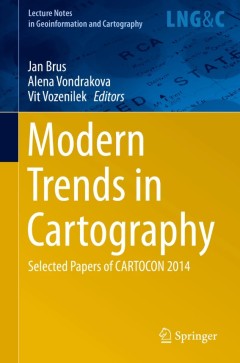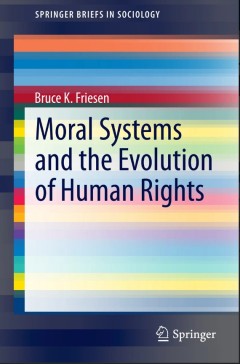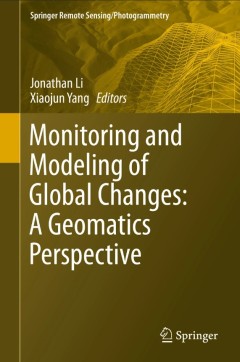Filter by

Modified Nucleic Acids in Biology and Medicine
This volume is comprised of 18 chapters, covering various aspects of DNA modification and RNA modified bases. It also discusses in detail circular RNA, therapeutic oligonucleotides and their different properties. The chemical nature of DNA, RNA, protein and lipids makes these macromolecules easily modifiable, but they are also susceptible to damage from both endogenous and exogenous agents. …
- Edition
- 1
- ISBN/ISSN
- 2197-9758
- Collation
- XIV, 453
- Series Title
- RNA Technologies
- Call Number
- -

Modeling in Biopharmaceutics, Pharmacokinetics and Pharmacodynamics
The state of the art in Biopharmaceutics, Pharmacokinetics, and Pharmacodynamics Modeling is presented in this new second edition book. It shows how advanced physical and mathematical methods can expand classical models in order to cover heterogeneous drug-biological processes and therapeutic effects in the body.The book is divided into four parts; the first deals with the fundamental principle…
- Edition
- 2
- ISBN/ISSN
- 978-3-319-27596-3
- Collation
- XXII, 483
- Series Title
- Interdisciplinary Applied Mathematics
- Call Number
- -

The Tagore-Gandhi Debate on Matters of Truth and Untruth
Between 1915 and 1941, Tagore (1861-1941) and Gandhi (1869-1948) differed and argued about many things of personal, national, and international significance---satyagraha, non-cooperation, the boycott and burning of foreign cloth, the efficacy of fasting as a means of resistance and Gandhi’s mantra connecting “swaraj” and “charkha”. The author tracks the development of this dialogue an…
- Edition
- -
- ISBN/ISSN
- 978-81-322-2116-6
- Collation
- -
- Series Title
- -
- Call Number
- -

Modern Trends in Cartography:Selected Papers of CARTOCON 2014
The fast exchange of information and knowledge are the essential conditions for successful and effective research and practical applications in cartography. For successful research development, it is necessary to follow trends not only in this domain, but also try to adapt new trends and technologies from other areas. Trends in cartography are also quite often topics of many conferences which h…
- Edition
- 1
- ISBN/ISSN
- 978-3-319-07925-7
- Collation
- XXIII, 534
- Series Title
- Lecture Notes in Geoinformation and Cartography
- Call Number
- -

Moral Systems and the Evolution of Human Rights
This volume offers a comprehensible account of the development and evolution of moral systems. It seeks to answer the following questions: If morals are eternal and unchanging, why have the world’s dominant religious moral systems been around for no more than a mere six thousand of the two hundred thousand years of modern human existence? What explains the many and varied moral systems acro…
- Edition
- 1
- ISBN/ISSN
- 978-94-017-9550-0
- Collation
- XVIII, 76
- Series Title
- SpringerBriefs in Sociology
- Call Number
- -

The Synthetic Nitrogen Industry in World War I Its Emergence and Expansion
This concise brief describes how the demands of World War I, often referred to as the Chemists’ War, led to the rapid emergence of a new key industry based on fixation of atmospheric nitrogen. Then, as now, nitrogen products, including nitric acid, and nitrates, were essential for both fertilizers and in the manufacture of modern explosives. During the first decade of the twentieth century, t…
- Edition
- -
- ISBN/ISSN
- 978-3-319-19357-1
- Collation
- -
- Series Title
- -
- Call Number
- -

Monitoring and Modeling of Global Changes: A Geomatics Perspective
The chapters in this book present state-of-the-art geomatics technologies applied in global environmental studies. This text provides the latest research findings and delivers complete references to related publications. This book will motivate the undergraduate and graduate students, researchers and practitioners to better understand the environmental changes with informed solutions. Global…
- Edition
- 1
- ISBN/ISSN
- 978-94-017-9812-9
- Collation
- XI, 320
- Series Title
- Springer Remote Sensing/Photogrammetry
- Call Number
- -

Molecular Pathology of Nervous System Tumors
This book serves as a comprehensive guide to the rapidly evolving field of molecular neuropathology of nervous system tumors, as well as the underlying biology and emerging molecular targeted therapies. Special emphasis is given to already established and emerging molecular diagnostic tests in neuropathology, as well as molecular targeted therapies. The book is organized by clinico-pathologic d…
- Edition
- 1
- ISBN/ISSN
- 978-1-4939-1829-4
- Collation
- XV, 247
- Series Title
- Molecular Pathology Library
- Call Number
- -

Modern Technologies for Landslide Monitoring and Prediction
Modern Technologies for Landslide Investigation and Prediction presents eleven contributed chapters from Chinese and Italian authors, as a follow-up of a bilateral workshop held in Shanghai on September 2013. Chapters are organized in three main parts: ground-based monitoring techniques (photogrammetry, terrestrial laser scanning, ground-based InSAR, infrared thermography, and GNSS networks), g…
- Edition
- 1
- ISBN/ISSN
- 978-3-662-45930-0
- Collation
- XII, 249
- Series Title
- Springer Natural Hazards
- Call Number
- -

Organic Amendments and Soil Suppressiveness in Plant Disease Management
This book provides a timely review of concepts in plant disease management involving microbial soil suppressiveness and organic amendments. Topics discussed include the impact of suppressive soils on plant pathogens and agricultural productivity, the enhancement of soil suppressiveness through the application of compost and the development of disease suppressive soils through agronomic manag…
- Edition
- -
- ISBN/ISSN
- 978-3-319-23075-7
- Collation
- -
- Series Title
- -
- Call Number
- 631.4 ORG
 Computer Science, Information & General Works
Computer Science, Information & General Works  Philosophy & Psychology
Philosophy & Psychology  Religion
Religion  Social Sciences
Social Sciences  Language
Language  Pure Science
Pure Science  Applied Sciences
Applied Sciences  Art & Recreation
Art & Recreation  Literature
Literature  History & Geography
History & Geography